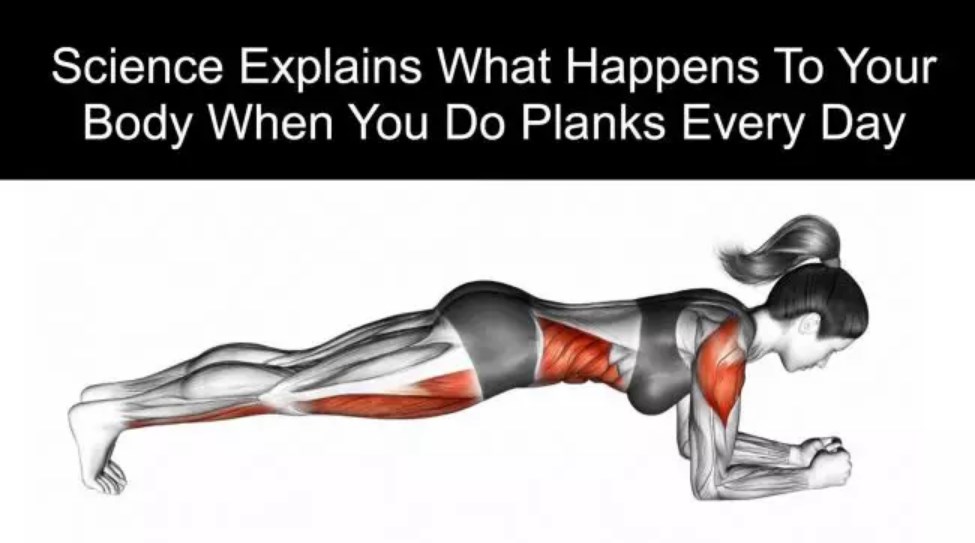You have surely already heard about the power of planks, as this exercise is apparently one of the most powerful ways to strengthen the body and get into shape. It is a full-body workout that activates a series of muscles in the body, like the muscles of the back, abs, and pelvis, but is especially beneficial for the core. science, health, workouts, exercise, science, health, workout, exercise
The primary core muscles are transversusabdominis, obliques, multifidus, rectus abdominis, the diaphragm, and erector spinae, while the secondary core muscles include the latissimusdorsi, trapezius and the gluteus maximus.
By activating the core, planks offer numerous other benefits, such as:
- A strong core means a proper balance and increased stability
- Planks improve body posture
- A strong core helps and improves all our everyday movements
- Help weight loss
- They support the back, strengthen it, and prevent injuries and pain
- Improve brain performance
- Relieve stress and anxiety
- Boost the flexibility of the shoulders, toes, hamstrings, collarbone, and feet arches
- Accelerate metabolism
- They stretch the back, shoulder, leg, and thigh muscles
The plank is a simple exercise that requires no gym equipment, so you can do it anywhere and anytime. Yet, it would be beneficial to make some warm-up exercises before you do planks.
Traditional, classic planks will activate your abs, biceps, buttocks, quadriceps, shins, and shoulders, and reduce upper and lower back pain.
Here are the instructions you need to do a proper classic plank:
Lie on the floor, in a pre-pushup posture. Push the upper and lower body off the ground, and activate the abs even more and as you push yourself up on the forearms. The forearms should be at a 90-degree angle, with the elbows just below the shoulders.
Your body should be straight and parallel to the floor, while you are relying on the strength of your forearms and toes. To stimulate the core even more, suck the belly inwards.
Initially, hold the position for 10 seconds, release, and return to the initial posture. Yet, you should gradually increase the time.
If you find the plank too difficult to hold, you can modify it, and progress over time.
For instance, you can start by simply leaning up against a wall and slowly reducing the angle of your body until the hands progress from the wall to table-height, to chair-height and then the floor.
Remember, breathing is the most important thing to get stronger and hold the plank. The more you breathe, the more oxygen your muscles get for fuel, and the less you will focus on the difficulty.
Breathe steadily, and remember to engage your glute muscles. You should also squeeze the buttocks hard, and hold the time. You will also be more stable if you keep the feet wider.
You will get used to it over time, and the effects of planks will definitely stimulate you to continue exercising!
